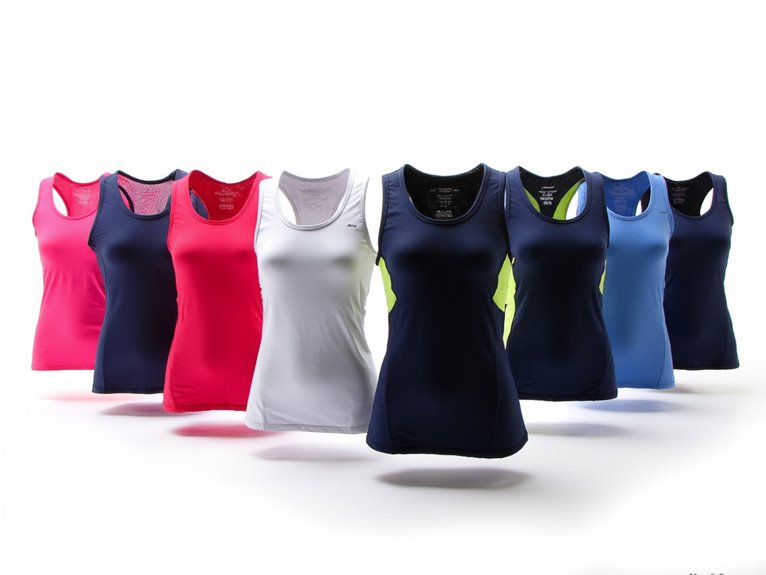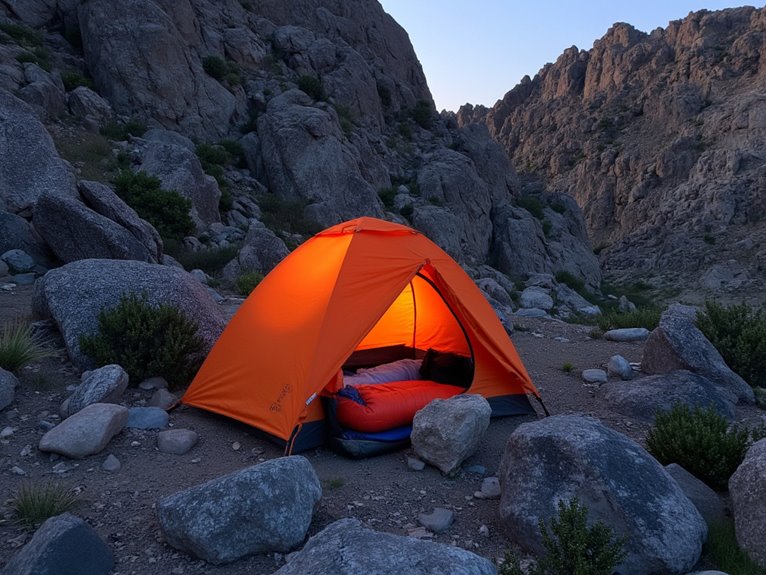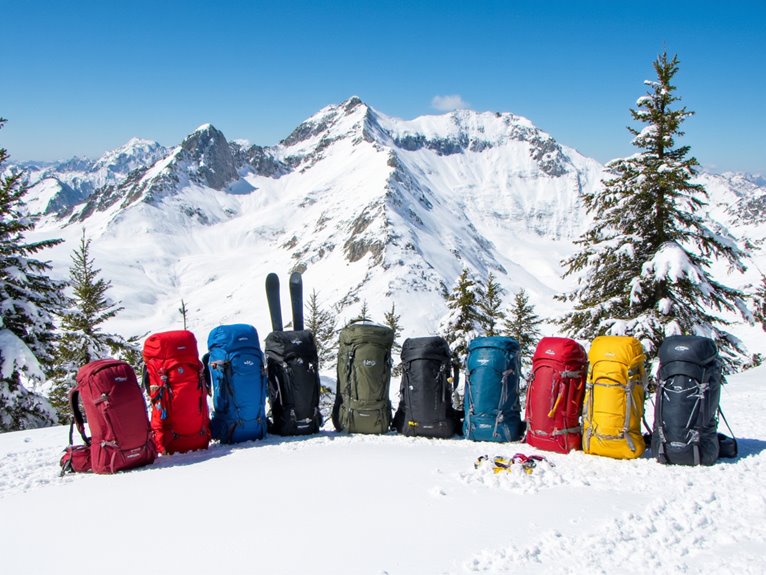Are External Frame Backpacks Comfortable?
External frame backpacks are designed to prioritize comfort, incorporating features that effectively distribute weight, alleviate pressure points, and promote airflow to provide a comfortable carrying experience, even with heavy loads or on extended treks. The frame itself serves as a backbone, providing a comfortable distance between the wearer's back and the pack's contents. Padded shoulder straps and hip belts work together to spread the load, reducing fatigue and discomfort. With proper fit and sizing options, as well as durable material selection, external frame backpacks can provide superior comfort and support for carriers. As we delve into the nuances of external frame backpack design, the benefits of comfort and support become clear.
We are supported by our audience. When you purchase through links on our site, we may earn an affiliate commission, at no extra cost for you. Learn more. Last update on 24th December 2025 / Images from Amazon Product Advertising API.
Design Features for Comfort
External frame backpacks prioritize comfort through a range of design features that effectively distribute weight, alleviate pressure points, and promote airflow.
The frame itself serves as a backbone, allowing the pack to maintain its shape and providing a comfortable distance between the wearer's back and the pack's contents.
Padded shoulder straps and hip belts work in tandem to spread the load, reducing fatigue and discomfort.
Additionally, many external frame backpacks feature breathable mesh panels and ventilation systems, which foster airflow and help regulate body temperature.
These thoughtful design elements work together to create a comfortable carrying experience, even on extended treks or with heavy loads.
Weight Distribution and Balance
Proper weight distribution and balance are critical considerations in external frame backpack design, as they substantially impact the overall carrying experience and wearer comfort.
A well-designed external frame backpack should distribute the weight evenly, allowing the wearer to maintain good posture and move freely.
This is achieved by strategically placing the heavy items, such as camping gear or food, close to the wearer's back and near the hip belt.
This setup enables the weight to be transferred efficiently to the hips, reducing the strain on the shoulders and back.
A balanced load also helps to prevent the pack from shifting or swaying, which can cause discomfort and fatigue.
Fit and Sizing Options
In the realm of external frame backpacks, a proper fit is vital for peak comfort and performance.
To achieve this, manufacturers offer various fit and sizing options, including adjustable torso lengths, multiple shoulder strap configurations, and a range of hip belt sizes.
Torso Length Adjustment
As a crucial aspect of achieving a comfortable and stable carrying experience, torso length adjustment options allow backpackers to customize the fit of their external frame backpacks to their unique body proportions.
This feature is particularly important, as it ensures the pack sits comfortably on the back, distributing weight evenly and reducing fatigue.
To achieve optimal torso length adjustment, look for backpacks with the following features:
- Sliding torso adjustment systems, which allow for seamless adjustments to be made on the go.
- Modular torso components, which can be mixed and matched to create a tailored fit.
- Continuous torso adjustment, which enables fine-tuned adjustments to be made with ease.
Shoulder Strap Options
In addition to a customizable torso length, a well-designed external frame backpack should also feature shoulder straps that can be tailored to fit individual body types, ensuring a comfortable and secure carrying experience.
Adjustable shoulder straps with sliding buckles or hook-and-loop systems allow for a precise fit, accommodating varying shoulder widths and angles.
Some models may offer interchangeable shoulder straps or pads to accommodate different body types or preferences.
Additionally, padded shoulder straps with breathable mesh or ventilation systems can improve comfort and reduce fatigue.
Hip Belt Sizes
A well-designed external frame backpack should also feature a hip belt with adjustable sizing options to accommodate varying waist sizes and body types, ensuring a secure and comfortable fit.
This is crucial, as a properly fitted hip belt can distribute the weight of the pack evenly, reducing fatigue and discomfort.
To achieve optimal comfort, look for hip belts with the following features:
- Adjustable torso lengths to accommodate different body types and sizes.
- Padded lumbar supports to reduce pressure points and enhance comfort.
- Quick-release buckles for easy on and off, as well as effortless adjustments.
Material Selection and Quality
In the realm of external frame backpacks, the material selection and quality of construction are vital considerations.
The durability of the fabric, in particular, plays a significant role in determining the overall performance and longevity of the pack.
Fabric Durability Matters
The fabric selection and quality of an external frame backpack can profoundly impact its overall durability and performance, making it a vital consideration for outdoor enthusiasts. A well-made backpack can withstand the rigors of outdoor adventures, while a poorly constructed one can leave you stranded.
When it comes to fabric durability, look for the following key features:
- Water-resistant coatings: Ensure the fabric is treated with a water-repellent coating to protect your gear from rain and moisture.
- Tear-resistant materials: Choose a backpack made with durable, tear-resistant materials that can withstand rough handling and harsh environments.
- Abrasion-resistant reinforcements: Opt for a backpack with reinforced areas, such as the bottom and corners, to reduce wear and tear.
Weight Distribution Systems
Proper weight distribution is essential in an external frame backpack, as it directly affects the comfort and stability of the load, and a well-designed system relies on both strategic material selection and exceptional quality.
The right materials can make a significant difference in weight distribution, with durable and lightweight options such as nylon, polyester, or ripstop fabrics being preferred choices.
High-quality components, including sturdy buckles, reinforced stitching, and robust zippers, also play a pivotal role in maintaining that the weight is evenly distributed.
A well-designed weight distribution system guarantees that the load is balanced, reducing fatigue and discomfort, and allowing for a more comfortable hiking experience.
Load Carrying and Support
External frame backpacks are designed to distribute the weight of the load across the entire back and hips, providing ideal support and comfort for carriers. This design enables the pack to carry heavy loads efficiently, reducing fatigue and discomfort.
The external frame allows for a more even distribution of weight, taking pressure off the shoulders and back.
Three key benefits of external frame backpacks regarding load carrying and support are:
Reduced fatigue: By distributing the weight of the load across the entire back and hips, external frame backpacks reduce fatigue and discomfort.
Improved balance: The external frame design helps to maintain balance and stability, even with heavy or unevenly distributed loads.
Increased comfort: By taking pressure off the shoulders and back, external frame backpacks provide increased comfort and support for carriers.
User Reviews and Experiences
Carriers who have shouldered the burden of heavy packs for extended periods universally praise external frame backpacks for their ability to alleviate discomfort and boost endurance.
Many users report that these backpacks have greatly reduced fatigue and strain, allowing them to hike longer distances with heavier loads.
Online reviews and forums are filled with testimonials from satisfied users who swear by external frame backpacks for their comfort and support.
One hiker reported being able to carry a 50-pound pack for 12 miles without feeling exhausted, thanks to the even weight distribution and breathable design of their external frame backpack.
These real-world experiences validate the ergonomic design and load-carrying capabilities of external frame backpacks.






